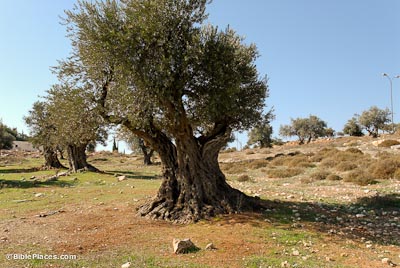Trees of ancient Israel (Ezekiel 31)
Illustration: Israeli olive tree
Trees in ancient Israel, including its many native species of oak, pine and terebinth, as well as imported cedars from Lebanon, were precious natural resources highly valued for their use in construction and manufacturing, food production, environmental protection (such as erosion prevention) and the production of oils, perfumes, spices, rope and other by-products. Besides their great commercial value, some were prized for their symbolic significance, particularly because of their awe-inspiring size and strength and for the sense of permanence they evoked. For example, some oak species in the region reach heights of over 24 m and live as long as 300 years. The majestic cedar grows upwards of 35 m and may live as long as 500 years, or 12 1/2 generations!
It is no wonder, therefore, that the oak and terebinth were often associated with the divine presence and marked important sites of worship, especially for the patriarchs (Genesis 13:18, 18:1). In fact, the trees themselves were often considered sacred objects of worship- They were sometimes planted beside altars in Canaanite temple courtyards and were associated with El’s consort (partner), the goddess Asherah (cf. Deuteronomy 7:5, 2 Kings 17:16). The powerful cedar was also frequently planted in palace and temple gardens, symbolizing both king and deity in its grandeur and life-giving benefit to the land (see Psalm 104:16, Isaiah 51:3, Ezekiel 28:13, 31:8-9). Consequently, it became the ideal symbol for great rulers and their empires, such as the Assyrian empire, which once cast its shadow over Israel and the rest of the ancient Near East, reaching its apex in the early seventh century B.C. The imposing Assyrian empire, however, was itself felled abruptly within a few year’s time (Ezekiel 31).
